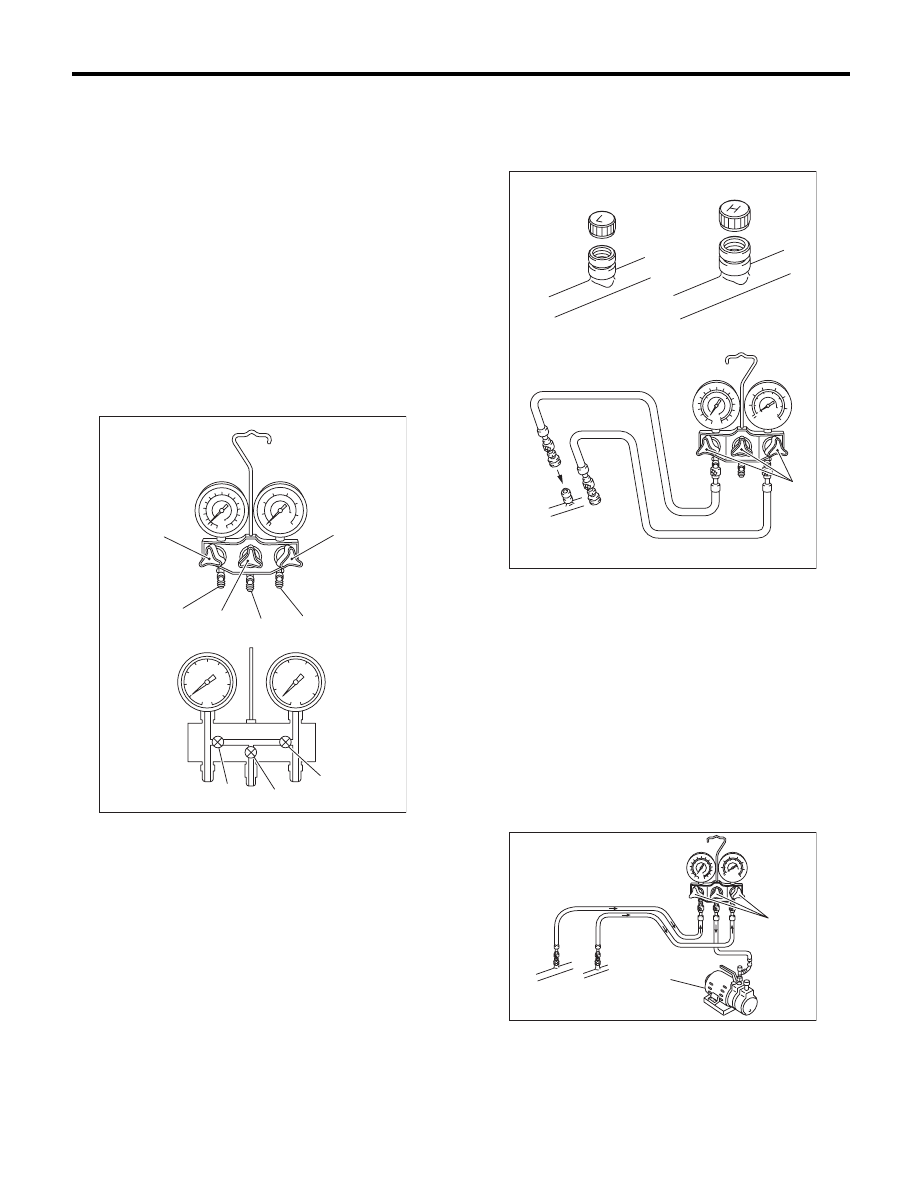Subaru Legacy IV (2008 year). Manual - part 980

AC-23
Refrigerant Charging Procedure
HVAC SYSTEM (HEATER, VENTILATOR AND A/C)
4. Refrigerant Charging
Procedure
A: PROCEDURE
CAUTION:
• While working, make sure to wear protective
goggles and gloves.
• Air in the cycle can cause insufficient air con-
ditioning, and water in the cycle can cause
clogging in the cycle (icing) and rust. To re-
move this air and water content, use a vacuum
pump to perform evacuation of the system be-
fore filling with refrigerant. By making the in-
side of the cycle a vacuum, the water content
will evaporate even at atmospheric tempera-
tures, and can be removed.
1) Close all valves of the manifold gauge.
2) Attach the low pressure side and high pressure
side hoses to the vehicle service port.
CAUTION:
Confirm that the connection is secure.
3) Connect the center manifold hose of the mani-
fold gauge to the vacuum pump.
4) Operate the vacuum pump and open the low
pressure and high pressure side valves. Next, open
the center manifold hose valve, and begin evacua-
tion.
CAUTION:
Make sure to perform evacuation using a vacu-
um pump.
L: Low pressure gauge
H: High-pressure gauge
(1) Low pressure valve
(2) Vacuum pump valve
(3) High pressure valve
(4) For low pressure
(5) For vacuum pump
(6) For high pressure
AC-00146
(2)
(4)
(5)
(6)
(3)
(3)
(2)
(1)
H
L
(1)
(1) Low-pressure side service port
(2) High-pressure side service port
(3) Close
(1) Vacuum pump
(2) Open
AC-00147
(3)
(2)
(1)
AC-00148
(1)
(2)